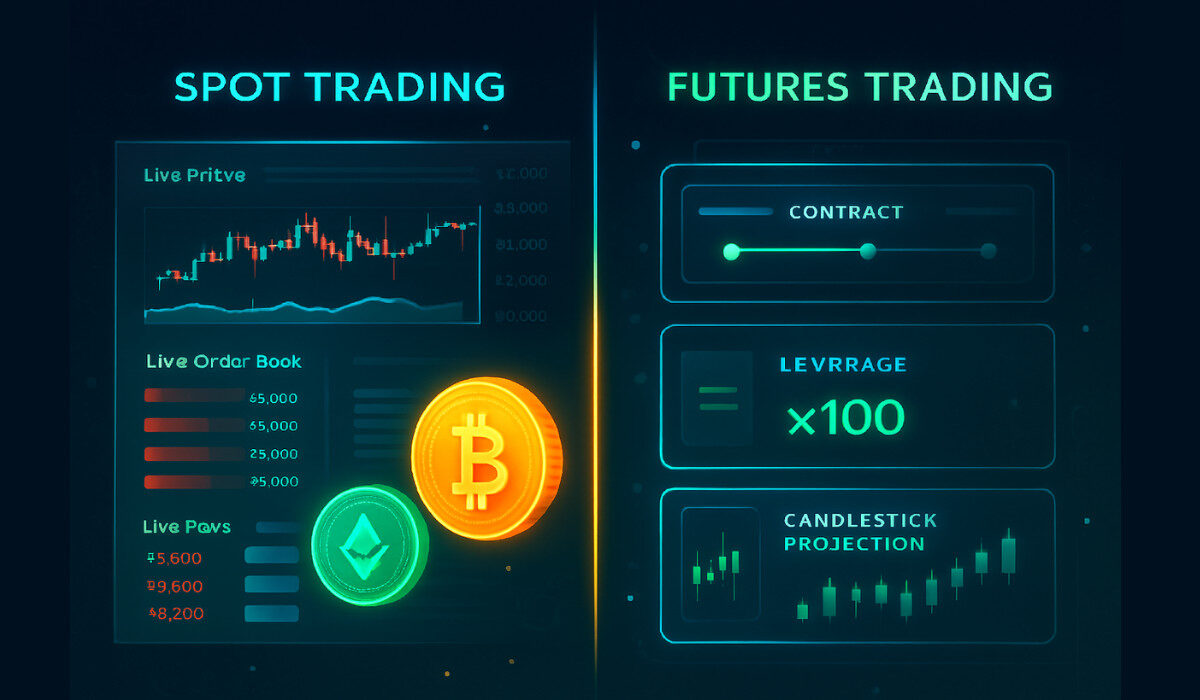What is Crypto Arbitrage Trading? Why Traders Opt for Arbitrage Trading?

When the prices of two cryptocurrencies differ on two different exchanges, there occurs an opportunity for traders to capitalize on this price difference. By buying at the exchange offering cryptocurrencies at a lower price and selling them at a higher price on the other exchange, traders make a profit on the price difference. This is essentially what crypto arbitrage trading is.
Since the trading takes place in real-time, traders making use of crypto arbitrage trading do not need to rely on predicting where the price will go in the future. This makes arbitrage trading a form of short-term, quick-execution type of trading. Traders may need to make use of certain tools if they are to trade at a fast pace. With modern-day computing making these types of trading easier, traders get opportunities to collect consistent returns. However, this crypto arbitrage trading invites a lot of competition. Hence, the transaction speed, cost of transactions, etc., are factors that could eat into a trader’s profits.
In this article, we will take a better look at crypto arbitrage trading. We will go through some types, execution strategies, and why traders use this strategy.
Why Traders Use Arbitrage Strategy
The most common reason for traders to adopt arbitrage trading is that it allows them to profit from temporary price discrepancies between markets. Arbitrage offers a way to earn returns without relying on long-term market prediction. Since the strategy is based on price gaps rather than trend forecasting, it can be very interesting to traders who trade volatile assets.
Arbitrage trading can help in diversifying a trader’s portfolio, which helps greatly with risk management. By not relying on directional bets, where profits are generated from rising and falling prices, traders reduce their exposure to huge market volatility and unpredictable price swings.
Since algorithmic trading and API based automated trading are finding an increasing place among traders, arbitrage becomes a more accessible choice for traders. Couple this with faster exchanges, improved data feeds, and high-speed internet, and arbitrage trading becomes more profitable in principle.
Types of Arbitrage Trading
There is more than one type of crypto arbitrage trading. In this section, we will be looking at some of the most popular types of arbitrage trading.
1. Spatial Arbitrage
Spatial arbitrage is the most basic of crypto arbitrage trades. In Spatial arbitrage, a trader buys a specific asset whose prices are different on two different exchanges. The buy process takes place at the exchange where the price of the asset is lower, and the sell takes place at the other exchange where the price is relatively higher.
This process involves buying, sending the crypto asset, selling, and realizing profit. Since this round trip involves sending the crypto asset from one exchange to another, the transaction time of the asset and the cost of the transaction are key parameters to look out for. A slow asset will reach the second exchange after a long time, and by that time, the prices could shift to an unfavorable value due to volatility. Also, if the transaction cost is higher than the profit margin, the net process will yield losses. So it is very important to make note of these factors.
2. Triangular Arbitrage
Triangular arbitrage is a very interesting type of crypto arbitrage trading. This requires three different pairs of crypto assets, for instance, ETH/BTC, ETH/USDT, and BTC/USDT. Triangular arbitrage carries the advantage that it does not require a trader to venture out of one exchange and send the asset to another exchange. This eliminates the two big negative factors we saw with spatial arbitrage: transaction time and transaction fees.
However, to make use of triangular arbitrage, there should be occurrences of misaligned conversion rates within an exchange. In normal cases, the prices of assets are almost always aligned in an exchange, which limits the frequency of triangular arbitrage opportunities. If a misalignment occurs, traders can benefit from it by utilizing the price difference.
Traders will swap the base asset for the intermediary asset, for example, Bitcoin to Ethereum. Then the intermediary asset to the third base pair, for example, ETH to USDT. Finally, the trader will buy back the base asset, for example, USDT to BTC. In this round trip, if the trader ends up with more BTC than they started with, the arbitrage is successful.
3. Statistical Arbitrage
Statistical arbitrage also takes place within one exchange. By making use of quantitative mathematical models together with complex computer algorithms, traders can spot micro price oscillations. With this information, traders buy at low and sell at high, repeating the process and compounding the profits.
Statistical arbitrage is more aligned towards traditional trading; however, the nature of profiting from rapid price movements in a short period of time is what makes it an arbitrage strategy.
4. Cross-Border Arbitrage
There are regional variations in the prices of cryptocurrencies due to local demand and accessibility. Cross-border arbitrage takes advantage of these differences by buying crypto from a region where it is cheaper and selling it to a location where the demand and thereby the price is higher.
This type of trading takes a lot of time to finalize, as a fiat entity is often involved. The inclusion of the fiat entity means there are banks as intermediaries. This is what slows the process down. The SWIFT transactions will take a minimum of 24 hours to process, so traders need to worry about extreme price volatility. This is because if the price drops by the time the payment reaches the seller, the trader will end up with losses.
Cross-border finance regulations and laws are yet another barrier to the smooth execution of Cross-Border arbitrage trading. The most affected aspect in this type of crypto arbitrage trading is the time.
5. Decentralized vs Centralized Arbitrage
Price gaps also exist between centralized exchanges, known as CEXs, and decentralized exchanges, called DEXs. AMMs or Automated Market Makers often create imbalances in DEXs. This allows the traders to buy and sell at a favorable price. These price differences are often more favorable compared to traditional CEX to CEX or DEX to DEX arbitrage trading.
6. Funding Rate Arbitrage
In the futures market, there is a system in place that collects fees from open trades of one side and pays them forward to the other side. To elaborate on this, a funding cycle in a futures contract may give fees to LONG positions and collect fees from SHORT positions. This depends on the market conditions and the prices.
Traders who make use of funding rate arbitrage will combine long and short positions in spot and futures markets simultaneously. Even though this method does not yield much profit, traders can lock in low-risk profits. These profits come from funding payments. This is also good for their portfolio as it can minimize the exposure to price by hedging.
7. Latency Arbitrage
Latency arbitrage profits from speed. Traders with faster data feeds or execution systems act on price updates before slower participants. This requires powerful computers and/or fast servers, etc. Retail investors cannot normally afford the setup for latency arbitrage; hence, this is commonly exploited by large firms or rich institutional investors.
Conclusion
In conclusion, crypto arbitrage trading is a worthy investment method that a trader must try at least once. Since there is no requirement for future price predictions, this type of trading is relatively safe from the issues of high market volatility.
With different types to choose from, traders have a vast array of options when it comes to profiting from crypto arbitrage trading. By making the right choice and exercising the right practices, traders can lock in significant profits by compounding them over time.
FAQs
Yes, but profitability may be limited. Transaction fees and transfer times may reduce gains.
In most countries, arbitrage trading in crypto is legal as it involves standard trading activities. If the region has restrictions on crypto transfers, arbitrage trading could become illegal in the said location.
Profits from arbitrage are usually taxable, so traders must look into detailed records to ensure that they are not losing money in the long run and/or violating tax laws.
Learning basic automation or relying on established automation platforms can help beginners avoid the need to know programming for automating arbitrage trading.
Sudden liquidity issues, network congestion, etc., are some of the things an arbitrage trader should be on the lookout for.
Crypto & Blockchain Expert





